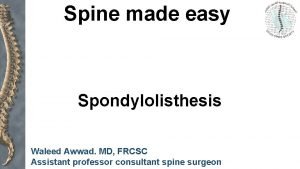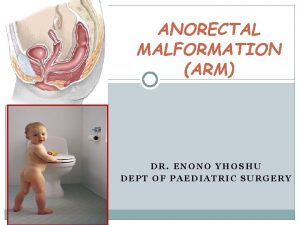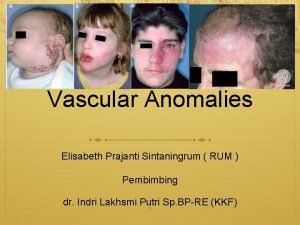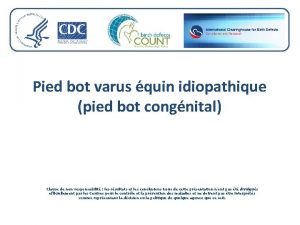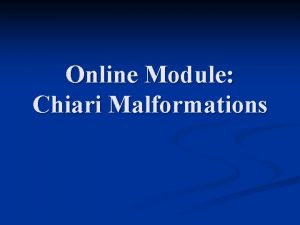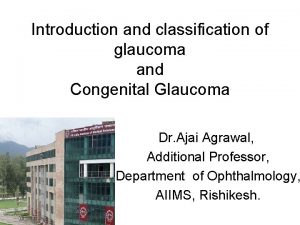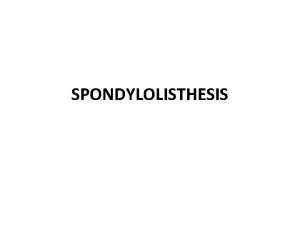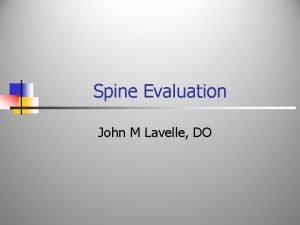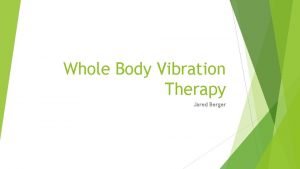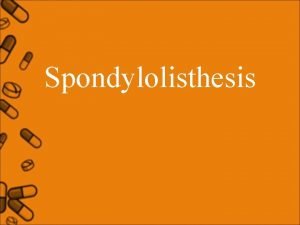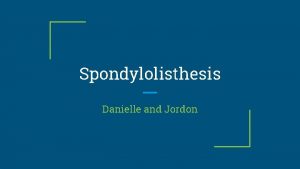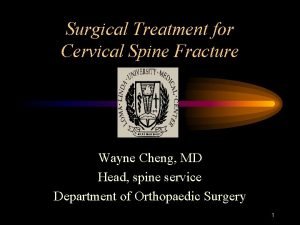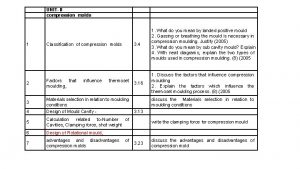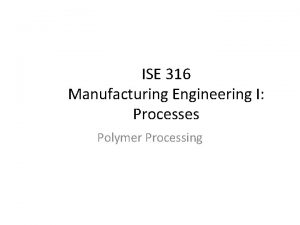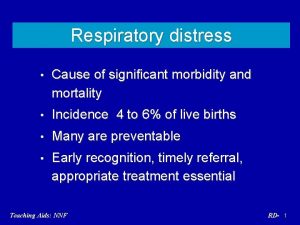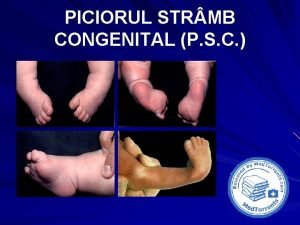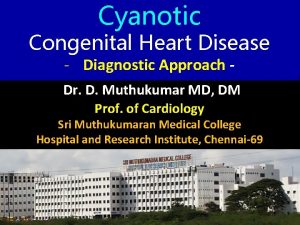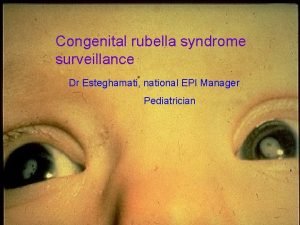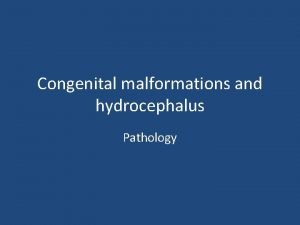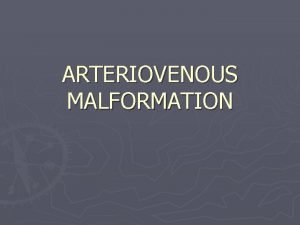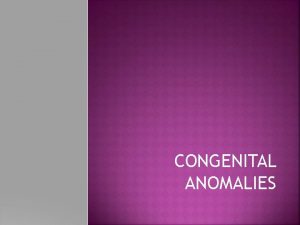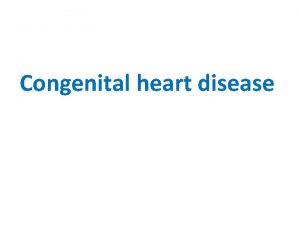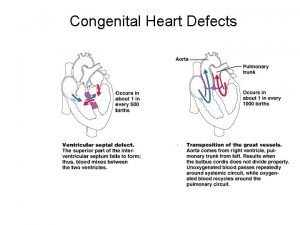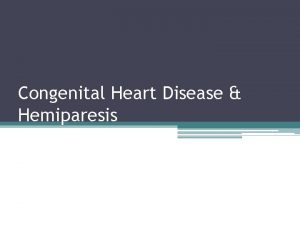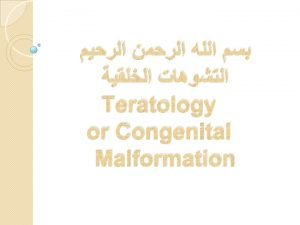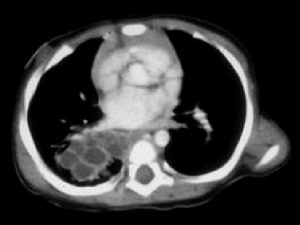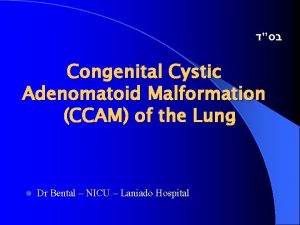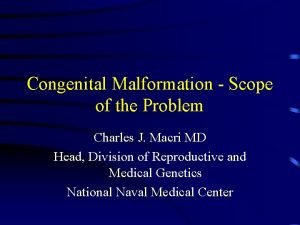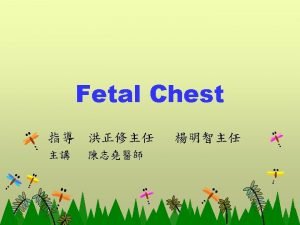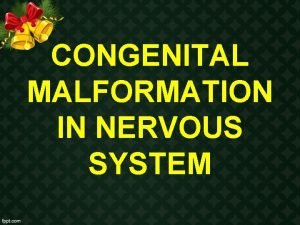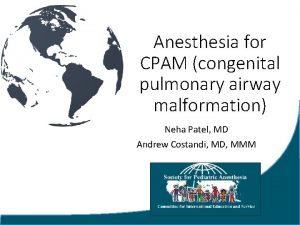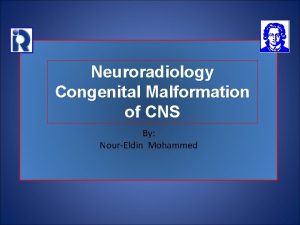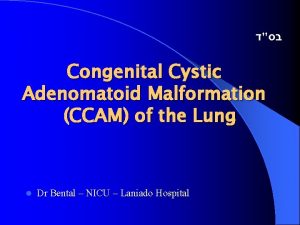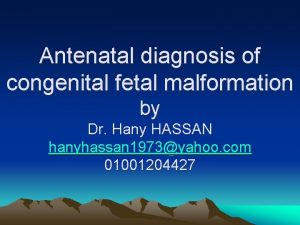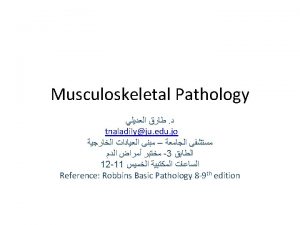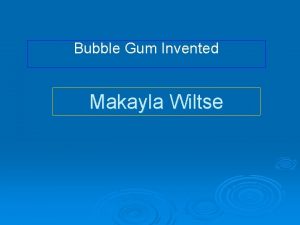Spondylolisthesis Wiltse Classification n Type IDysplastic congenital malformation





















- Slides: 21

Spondylolisthesis

Wiltse Classification n Type I—Dysplastic (congenital malformation of sacrum or neural arch) n n n Trapezoidal L 5, rounded sacrum, highgrade slip astd with progression, Boxall slip angle >55 14 -21% Astd with spina bifida

Wiltse Classification n Type IIA—Isthmic, lytic (fatigue fracture) Type IIB—Isthmic, elongation of pars Type IIC—Isthmic, acute fracture of pars

Wiltse Classification n Type IIA—Isthmic, lytic (fatigue fracture) Type IIB—Isthmic, elongation of pars Type IIC—Isthmic, acute fracture of pars n n n n Eskimos 30%, Japanese 40% 15 -70% in ist deg relatives Never before walking age 4. 4% 6% in adulthood Fast bowlers, L 5 Commonest (50%) 25% chance of slip progression

Wiltse Classification n Type III—Degenerative (facet joint failure) n n Commonest in >50 yr Female > male 25 times more common if facet angle > 45 deg (Love TW, JBJS Br 1999) L 4 -L 5

Wiltse Classification n Type IV—Acute fracture of posterior elements other than the pars

Wiltse Classification n Type V—Pars elongation due to pathology (tumour, multiple myeloma, OI) n Type VI - Iatrogenic

Meyerding Grading

Marchetti and Bartolozzi

PI and Spondylolisthesis

PI and Spondylolisthesis

Lysis

X-ray

CT-scan

MRI

SPECT-CT n SPECT: highest sensitivity for bone activity CT: highest anatomical specificity n Neg CT + Pos SPECT n n Stress response, Pre-lysis Good prognosis for healing and bony union Pos CT + Neg SPECT n Non-union chronic lesion

Treatment Activity modification n (Bracing) n Physiotherapy n n n Lower abdominal Hamstring stretch Spinal flexion Pars blocks

Pars repair

Surgery Gill procedure n Fusion n n Postero-lateral n Uninstrumented / instrumented

Inter-body fusions Better reduction n Restore foraminal height n Bigger surface area for fusion n Graft is under compression n

ALIF v TLIF v PLIF v DLIF v XLIF v Axia. LIF v OLIF
 Wiltse classification
Wiltse classification Wingspread classification of anorectal malformation
Wingspread classification of anorectal malformation Psarp procedure steps
Psarp procedure steps Hemangioma arteriovenous malformation
Hemangioma arteriovenous malformation Pied talus
Pied talus Chiari malformation usmle
Chiari malformation usmle Stumped cornea
Stumped cornea Squatting position in tetralogy of fallot
Squatting position in tetralogy of fallot Spondylolisthesis
Spondylolisthesis Romberg test
Romberg test Cpt code for vibration therapy
Cpt code for vibration therapy Klippel feil syndrome
Klippel feil syndrome Spondylolisthesis word breakdown
Spondylolisthesis word breakdown Steel's rule of thirds
Steel's rule of thirds Compression molded
Compression molded Pot type mold & plunger type mold are the classification of
Pot type mold & plunger type mold are the classification of Pathophysiology of pneumonia
Pathophysiology of pneumonia Congenital pneumonia
Congenital pneumonia Codivila
Codivila Differential cyanosis
Differential cyanosis Congenital rubella syndrome
Congenital rubella syndrome Congenital malformations
Congenital malformations
